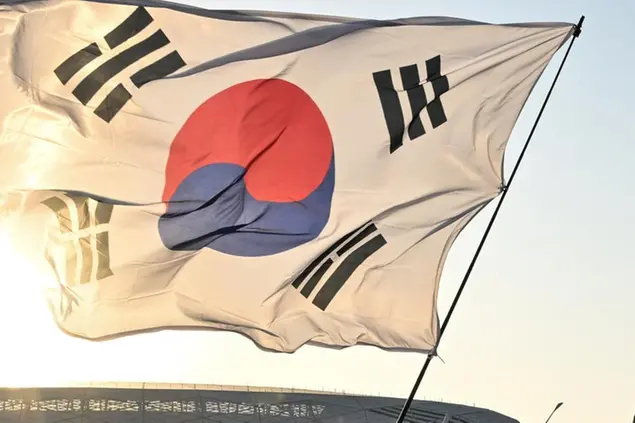PHOTO
SEOUL – South Korea is not just one of the United States’ most important strategic allies in Asia. It is also one of America’s largest trading partners, especially after the US-Korea Free Trade Agreement (KORUS) entered into force in 2012. In fact, the US is South Korea’s second-largest export market after China.
Once one of the world’s poorest countries, South Korea is currently the world’s 14th-largest economy and the fourth-largest in Asia, with a nominal GDP of $1.7 trillion, or $33,121 per capita. But its economic miracle is increasingly jeopardized by the shifting geopolitical terrain, particularly the escalating rivalry between the US and China.
To understand the scope of South Korea’s economic miracle, it is important to remember that at the end of the Korean War, its GDP per capita was 40% that of Ghana. After three years of brutal fighting that destroyed most of its infrastructure, South Korea had few natural resources, a negative savings rate, and virtually no exports.
By the mid-1950s, the situation had become so dire that foreign aid accounted for 75% of South Korea’s imports. Foreign aid was destined almost entirely for food, textiles, and other essential goods, with little remaining for investment.
But this began to change in the late 1950s and early 1960s, when South Korea launched a series of radical economic reforms, including financial and trade liberalization. Over the next three decades, annual GDP growth averaged nearly 10%.
Today, South Korea is a thriving market economy that relies heavily on trade. In 2023, exports accounted for 44% of its GDP, compared to just 3% in 1960. Its current-account surplus, was 2.1% of GDP in 2023, after having averaged 4.9% of GDP between 2012 and 2022. Moreover, GDP per capita is projected to overtake Japan’s this year – an astonishing feat, considering that in 1960, Japan’s GDP per capita (in purchasing-power-parity terms) was $508 while South Korea’s was just $158.3.
To be sure, South Korea faces significant demographic and economic challenges. Its fertility rate, at 0.7 births per woman, is the lowest in the world and far below the global average of 2.4. The population could be halved by 2100 if the country fails to boost its birth rate to 2.1 or adopt a more open immigration policy.
To tackle the demographic crisis, South Korea’s government has spent more than $270 billion on programs that seek to encourage couples to have more children. Corporations, concerned about projections that the working-age population could shrink by 25% by 2050, have launched programs of their own. One company, for example, offers employees a $75,000 bonus for each new baby. There is little evidence, however, that these efforts have had any significant effect.
Nevertheless, South Korea’s experience offers valuable lessons for policymakers in developed and developing countries alike. First and foremost, with enough determination and the right economic policies, even extreme poverty does not prevent rapid economic growth and rising living standards, and foreign aid and an open trading system are crucial to achieving both.
In addition to supporting economic development, foreign aid promotes America’s national-security interests. US support helped transform South Korea from a poor, war-torn country into an economic powerhouse and a vital strategic ally. Roughly 28,000 US troops remain stationed in South Korea, with the South Korean government bearing a large share of the costs. Notably, the country spent 2.7% of its GDP on defense in 2022, surpassing most NATO members and exceeding the alliance’s 2% target.
Regrettably, American tariffs and trade restrictions could undermine this crucial strategic alliance. Despite the success of KORUS, the US has sharply increased tariffs on major South Korean exports, including aluminum, steel, semiconductors, solar panels, and washing machines. The US has also imposed secondary sanctions on South Korean companies exporting semiconductors and chip-manufacturing equipment to China. These restrictions have adversely affected South Korean businesses, impeding the country’s recovery from the COVID-19 shock.
Beyond tariffs, South Korean manufacturers are still struggling to adapt to America’s new approach to global trade. President Joe Biden’s Inflation Reduction Act, for example, provides a $7,500 tax credit for US-made electric vehicles (EVs). Crucially, vehicles or batteries that were not produced in the US are not eligible for this tax credit, putting South Korean EV and battery manufacturers at a disadvantage.
In response to criticism from senior South Korean officials, who described these restrictions as an act of “betrayal,” the Biden administration announced it would allow several South Korean manufacturers to operate in China. But although this has partly mitigated the damage of secondary sanctions and other uncertainties surrounding US trade policy, it has led South Korean companies to reassess their investment plans and Chinese business operations
Worse, these actions could impede economic and military cooperation at a time when the US must strengthen its relations with its Asian partners. While protecting America’s national-security interests and promoting the green transition are important, surely there are ways to pursue these objectives without harming key allies.
Anne O. Krueger, a former World Bank chief economist and former first deputy managing director of the International Monetary Fund, is Senior Research Professor of International Economics at the Johns Hopkins University School of Advanced International Studies and Senior Fellow at the Center for International Development at Stanford University.
Copyright: Project Syndicate, 2024.
www.project-syndicate.org
